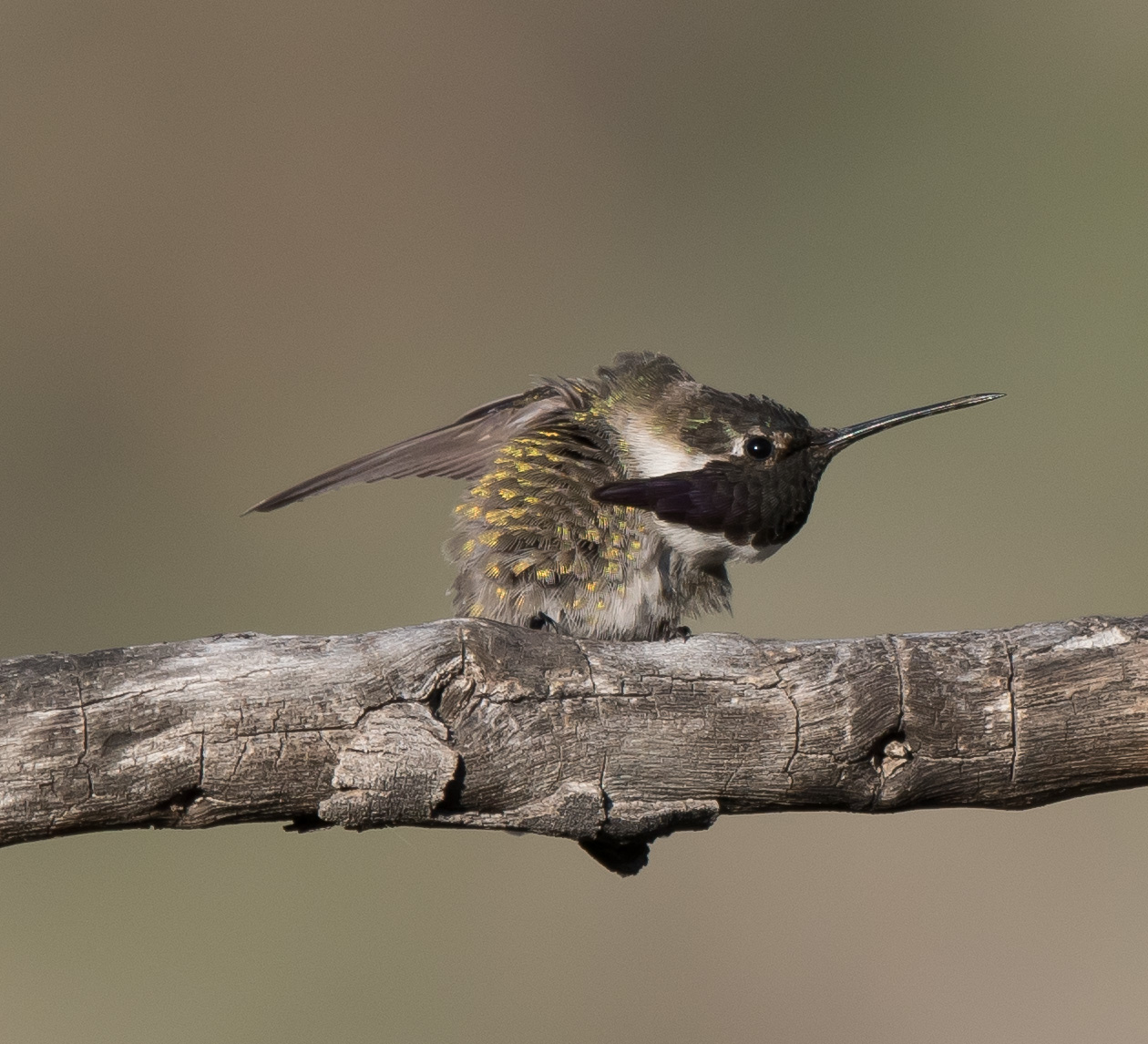Living in Arizona and being a fervent birder, I have been able to add most of all the Arizona regular bird species to my life list. So it has become harder and harder to add a new life bird for me in Arizona. There is still a handful of species that exist in the state, but are not easy to find, or they are located in some very remote areas that I have not yet visited. Hopefully within the next year, I will be able to knock a couple of these species from my bucket list. The other method of adding new birds to my life list is chasing down the vagrants that are passing through. Such was the case on May 1st of this year. For those that are curious about the headline of this post, 'PROW' is in quotes, as those 4 letters is the 4-letter banding code for this target bird.
One of North America's most beautiful 'eastern' warblers came to town in Tucson; a stunning Prothonotary Warbler (PROW). I was figuring that I was going to only find and see this bird in the eastern part of the United States in a future trip back east. Brian Johnson contacted me and asked if I was interested in chasing this beautiful bird. Birding friend, Chris Rohrer, who lives in Tucson, headed to the location the day after it was reported and his photos really had my mind reeling. There was no hesitation with my answer, and I said yes. We headed out of Mesa very early in the morning and once we arrived at the location, we quickly found 5 more birders in the area also searching for it. After about a 20 minute wait, the bird popped out and came out long enough to allow great looks and some photos for all that were there. Life bird number 642 was a spectacular specimen!
PROW is the 4 letter banding code for Prothonotary Warbler.
Prothonotary Warbler
While waiting for this bird to show itself, a few Western Tanagers were also making themselves quite obvious. This is a bird that I will always try to photograph if possible as they are quite colorful. They can sometimes be difficult to photograph as they can be a bit shy.
Western Tanager
Since we were fortunate enough to find this bird fairly early, we decided to make the most of our day and head to the southwestern part of Maricopa County to chase a county bird. This was an area that I had never visited as it is quite a distance from the Phoenix metro area. In trying to add birds to my Maricopa County list for the year, my target bird for this area was the Willet. Not necessarily a rare bird for the county, but definitely not all that common in migration and there had been a couple reports of them in some of the ponds in the area around Gila Bend. After checking out some of the ponds and coming up empty, our last stop was at the Gila Bend Sewage Ponds and we hit paydirt with a single Willet.
Willet
Since we were in the Gila Bend area, it made a lot of sense to make the route back to the Phoenix area via Highway 85 and make a stop at Glendale Recharge Ponds. This stop also paid off with the result being a lone Forster's Tern hanging out in Pond 3, which was another new county bird for me for the year.
Forster's Tern
Also located 2 Killdeer chicks with parents. 4 days prior to this visit I found a pair with 4 chicks. Can't be sure if it is the same pair or not, but since the chicks cannot fly at this age, there is a good chance it is the same pair. What became of the other 2 chicks, I do not know, but they also could have been hiding somewhere and got overlooked.
Killdeer with 2 chicks
And here is a photo of one of the chicks only 4 days earlier Note how much they grew in just four days!
It was nice to see the Semipalmated Plovers again and this time they appeared close to each other and I was able to get both of them in one frame.
Semipalmated Plovers
Another great day with some great birds, including a new lifer for me.



























































